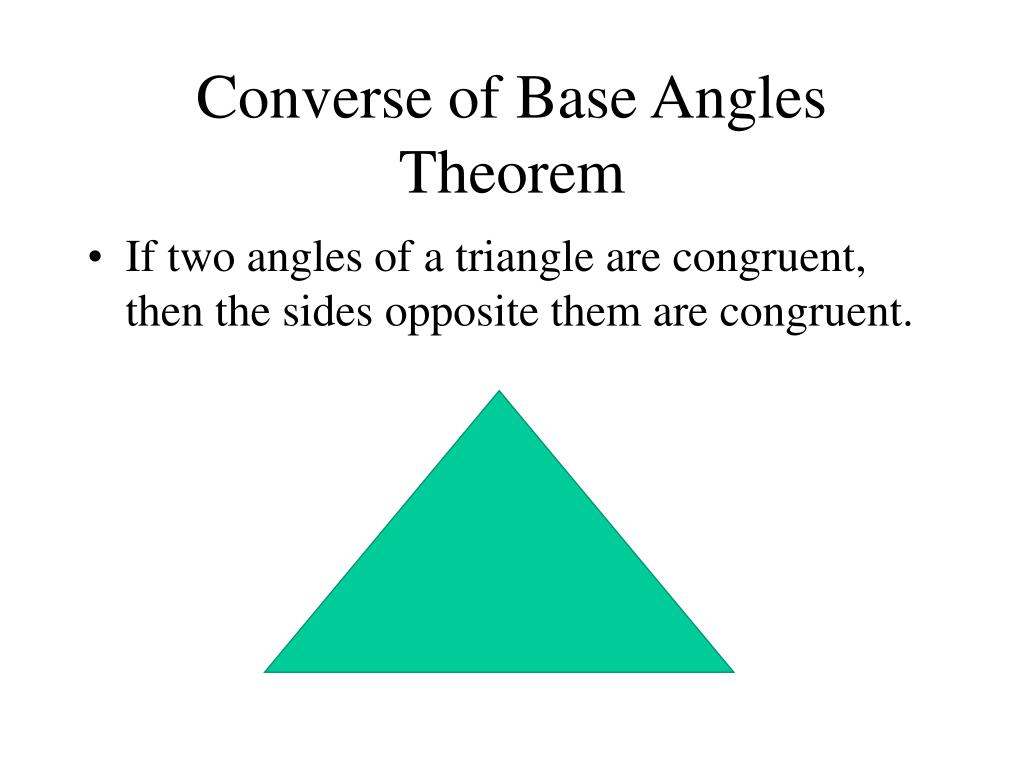

Now we have two small, right triangles where once we had one big, isosceles triangle: △BEA and △BAR. Where the angle bisector intersects base ER, label it Point A. Given that ∠BER ≅ ∠BRE, we must prove that BE ≅ BR.Īdd the angle bisector from ∠EBR down to base ER. To prove the converse, let's construct another isosceles triangle, △BER. Unless the bears bring honeypots to share with you, the converse is unlikely ever to happen. If I attract bears, then I will have honey. If I have honey, then I will attract bears. If I lie down and remain still, then I will see a bear.įor that converse statement to be true, sleeping in your bed would become a bizarre experience. If I see a bear, then I will lie down and remain still. If the premise is true, then the converse could be true or false: If the original conditional statement is false, then the converse will also be false. Now it makes sense, but is it true? Not every converse statement of a conditional statement is true.

Converse Of the Isosceles Triangle Theorem The Converse of the Isosceles Triangle Theorem states: If two angles of a triangle are congruent, then sides opposite those angles are congruent. So here once again is the Isosceles Triangle Theorem: You may need to tinker with it to ensure it makes sense.

The converse of a conditional statement is made by swapping the hypothesis (if …) with the conclusion (then …). So if the two triangles are congruent, then corresponding parts of congruent triangles are congruent (CPCTC), which means:Ĭonverse of the isosceles triangle theorem We just showed that the three sides of △DUC are congruent to △DCK, which means you have the Side Side Side Postulate, which gives congruence.

There! That's just DUCK! Look at the two triangles formed by the median. We find Point C on base UK and construct line segment DC: Isosceles Triangle Theorem Example To mathematically prove this, we need to introduce a median line, a line constructed from an interior angle to the midpoint of the opposite side. The Isosceles Triangle Theorem states: If two sides of a triangle are congruent, then angles opposite those sides are congruent. Knowing the triangle's parts, here is the challenge: how do we prove that the base angles are congruent? That is the heart of the Isosceles Triangle Theorem, which is built as a conditional (if, then) statement: The two angles formed between base and legs, ∠DUK and ∠DKU, or ∠D and ∠K for short, are called base angles. The third side is called the base (even when the triangle is not sitting on that side). ∠DU ≅ ∠DK, so we refer to those twins as legs. Like any triangle, △DUK has three sides: DU, UK, and DK Like any triangle, △DUK has three interior angles: ∠D, ∠U, and ∠K What else have you got? Properties of an isosceles triangle If these two sides, called legs, are equal, then this is an isosceles triangle. Hash marks show sides ∠DU ≅ ∠DK, which is your tip-off that you have an isosceles triangle. You can draw one yourself, using △DUK as a model. \) resembles a bridge which in the Middle Ages became known as the "bridge of fools," This was supposedly because a fool could not hope to cross this bridge and would abandon geometry at this point.Here we have on display the majestic isosceles triangle, △DUK.


 0 kommentar(er)
0 kommentar(er)
